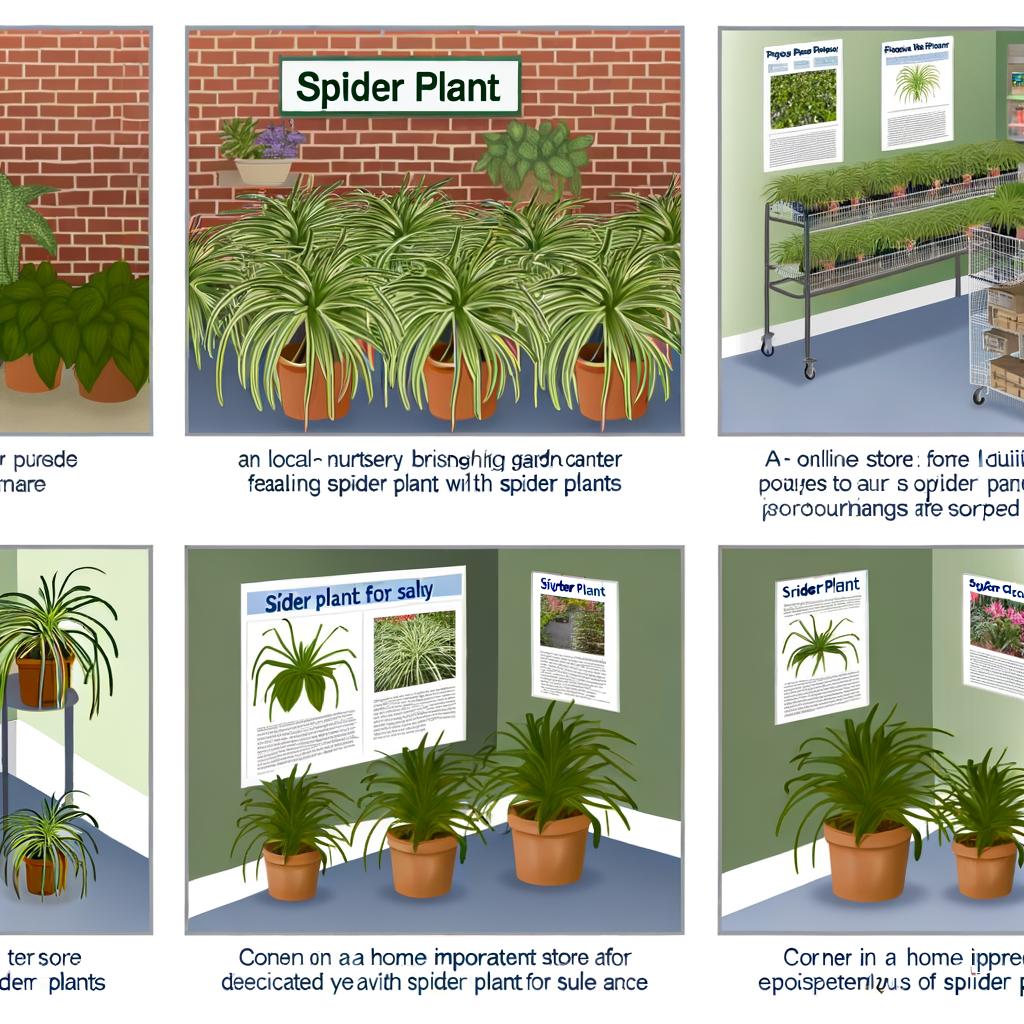Where to Find Spider Plants
Finding the perfect spider plant is easier than you think! Discover the best places to buy spider plants, from local nurseries to online retailers, and get expert tips for choosing healthy plants.

Shop Premium Spider Plants
Ready to buy? Check out our selection of carefully grown spider plants in three sizes.
Shop NowFinding Your Perfect Spider Plant
Spider plants are widely available and can be found through various sources. Whether you prefer shopping locally or online, there are excellent options for finding healthy, well-cared-for spider plants.
Local Nurseries and Garden Centers
Local nurseries and garden centers are excellent places to find spider plants. You can inspect the plants in person and get expert advice from knowledgeable staff.
Benefits of Local Shopping:
- • Inspect plants: See the actual plant before buying
- • Expert advice: Get care tips from staff
- • Immediate purchase: Take your plant home right away
- • Support local: Help local businesses
- • No shipping stress: Avoid plant shipping damage
Online Retailers
Online shopping offers convenience and access to a wider variety of spider plant types, including rare varieties that might not be available locally.
Popular Online Sources:
- • Etsy: Handmade and vintage items, including plants
- • Amazon: Wide selection with reviews
- • Specialty plant sites: The Sill, Bloomscape, etc.
- • Local plant shops: Many have online stores
- • Social media: Instagram plant sellers
Tip: Read reviews and check seller ratings when buying online to ensure quality plants.
Plant Swaps and Community Groups
Plant swaps and community groups are great ways to find spider plants while connecting with other plant enthusiasts in your area.
Community Sources:
- • Facebook groups: Local plant swap groups
- • Plant swaps: Organized events in your area
- • Nextdoor: Local community connections
- • Garden clubs: Membership organizations
- • Friends and family: Spider plants propagate easily
What to Look for When Buying
Whether shopping locally or online, there are important factors to consider when selecting a healthy spider plant.
Health Indicators:
- • Vibrant leaves: Green, not yellow or brown
- • No pests: Check for insects or damage
- • Good roots: Not root-bound or rotting
- • New growth: Signs of active growth
- • Proper size: Appropriate for the pot
Price Considerations
Spider plant prices can vary significantly depending on the source, size, and variety. Understanding typical price ranges can help you make informed decisions.
Typical Price Ranges:
- • Small plants: $5-15 (4-6 inch pots)
- • Medium plants: $15-30 (6-8 inch pots)
- • Large plants: $30-50+ (8+ inch pots)
- • Rare varieties: $20-100+ (depending on rarity)
- • Plant swaps: Often free or low cost
After Purchase Care
Once you've found your perfect spider plant, proper care during the transition period is crucial for its long-term health.
Transition Tips:
- • Quarantine: Isolate from other plants initially
- • Gradual acclimation: Introduce to new light slowly
- • Check soil: Ensure proper moisture levels
- • Monitor health: Watch for stress signs
- • Repot if needed: Consider repotting after settling
Learn more: Check out our complete spider plant care guide for detailed care instructions.
Start Your Spider Plant Journey
With so many options available, finding the perfect spider plant for your home is easier than ever. Whether you choose to shop locally or online, you're sure to find a beautiful spider plant that will bring joy and greenery to your space.